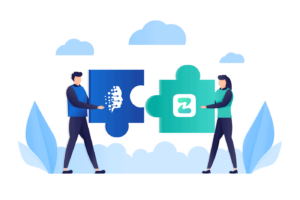Over the past decade, Litecoin (LTC) has evolved into one of the more prominent altcoins: it’s continually adapted by developers around the world to better suit consumer needs as a global payment system, and has shown a strong, lasting presence in the market. But with Bitcoin dominating over 60% of the cryptocurrency market, is there a need for Litecoin?
In this article, we’ll focus on what specific facets of Litecoin technology make it a viable option as a convenient, global, and decentralized payment system.
Why buy Litecoin?
In order for a cryptocurrency to compete with traditional payment methods on a global scale, it needs to quickly and efficiently process transactions, regardless of how much traffic there is on the network. One of the main drawbacks of Bitcoin is its scalability, or in layman’s terms, the rate at which transactions are confirmed; the more transactions there are at a specific time, the slower the system is able to “process” them. In times of high traffic on the Blockchain network, transaction fees tend to rise and wait times may increase ten-fold. While credit cards such as Visa boast an average rate of around 1,700 transactions per second (TPS), with the capability to scale up to 65,000 TPS, Bitcoin’s maximum rate is only 7 TPS.
Litecoin was coded by Charlie Lee in his spare time, who did so with the intention of creating a “lighter” version of Bitcoin, and was released to the public in 2011. More specifically, Lee made adjustments to the Blockchain protocol that would enable transactions on the network to be processed more efficiently (cost and time-wise) than Bitcoin.
The advantages of Litecoin
The Lightning Network was created as a solution to Bitcoin’s scalability issues and was first adopted by Litecoin. This network is a separate protocol that works on top of and in sync with the Blockchain network. In order for a crypto payment method to be a relevant contender to traditional methods, it needs to be secure and fast. Developers had originally focused mainly on Blockchain’s security (along with its decentralization), while neglecting—perhaps somewhat purposefully—the speed factor (what’s known as the “scalability trilemma”). The Bitcoin craze of December 2017 highlighted the importance of the ability to process many transactions in a timely manner, and the Blockchain’s lack thereof. Skyrocketed transaction fees that peaked at over $50 and transactions that were pending completion for days further highlighted the need for a speedy solution.
Essentially, the Lightning Network works as a system of payment channels that utilizes the use of smart contracts to facilitate peer-to-peer transactions off the Blockchain. After a payment channel is closed, the final transaction status is published on the Blockchain. What this means is that only two blocks need to be mined for an infinite number of transactions between two parties with no middle man. Essentially, when you buy Litecoin, you’re buying into a payment processing system that takes the decentralization of Bitcoin and scales it.
Frankly, Xinxi Wang, co-founder and Director of the Litecoin Foundation explained it best “This lightning network is revolutionary because it can handle millions of transactions per second or even higher. So the two layers work together to mitigate the shortages of each other, one is not scalable, one is scalable, but is centralized.”
The advantages of Litecoin over Bitcoin
Another factor that causes Litecoin’s transaction capacity to be four times that of Bitcoin is the base algorithm used by miners to verify blocks of transaction data (how transactions are processed). While Bitcoin uses the SHA – 256 method, Litecoin utilizes a different system called Scrypt (ess-crypt). Scrypt is effectively a more decentralized algorithm that requires hardware that is more economical and therefore accessible to miners; the scrypt algorithm can be run on most CPUs, which encourages more people to participate in the network. One of the main benefits of the Scrypt algorithm, as far as the average Litecoin-transactor is concerned, is a blocktime (the time it takes for a newly placed transaction to be completed) 1/4th that of Bitcoin’s.
That being said, while Bitcoin’s longer blocktime results in more security, the Scrypt method is still much more secure than any centralized system. Let’s say an ill-intentioned individual hacks into your bank’s system, which is centralized. Unfortunately, this is not necessarily a rare occurrence in the banking world, and anyone who hacks their servers can potentially gain access to your funds. With Litecoin, a potential attacker would need to gain control of 51% of the nodes (computers) on the network, which, given that they’d require 51% of the network’s total mining computing power, this is no feasible task.
Is there a need for Litecoin?
The philosophies behind why Satoshi created Bitcoin is one that many believe in, and the crypto industry’s growth since shows that as time goes by, more and more people are joining this financial revolution. The more people transact with cryptocurrencies, the more a convenient, reliable payment network is needed. While BTC is the brand name that everyone knows, to the point of being an eponym for those who are less familiar with the crypto industry, for those who view purchasing cryptocurrency as an investment in a future where a crypto-integrated global financial system is a reality, Litecoin is one of the most relevant ambassador.



